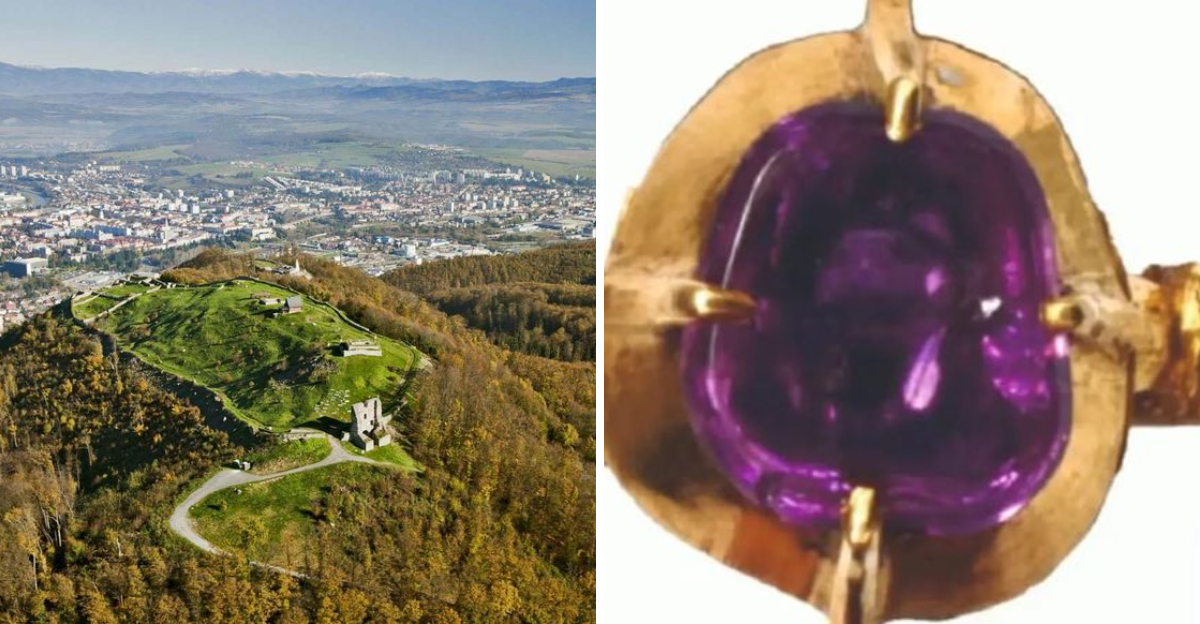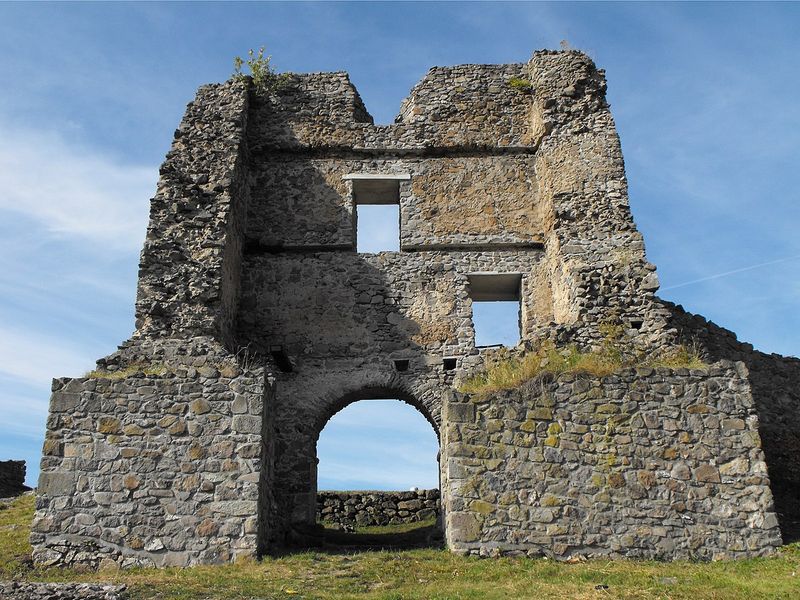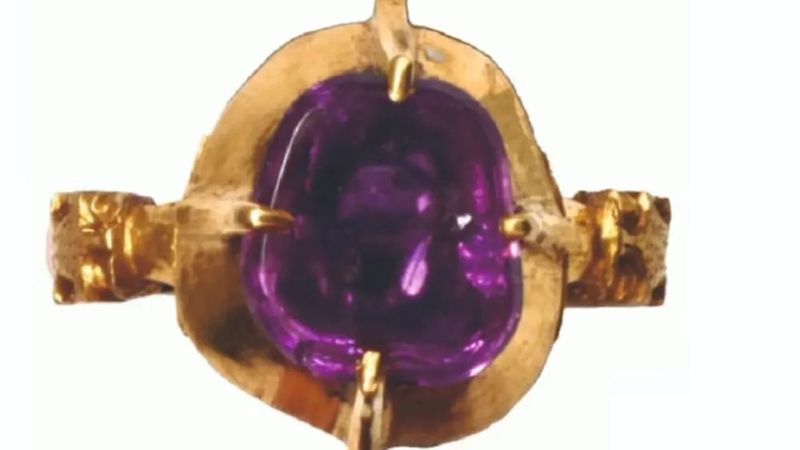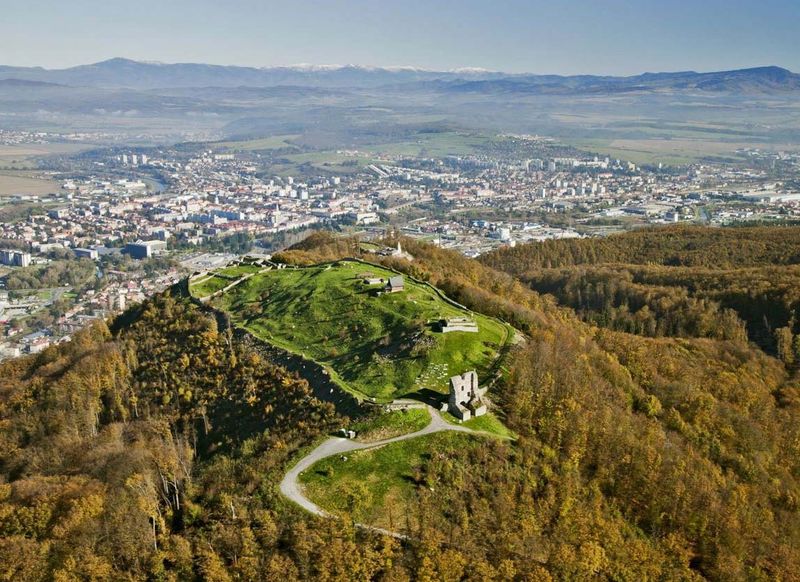Imagine holding a piece of jewelry that last adorned someone’s finger seven centuries ago!
In 2001, a remarkable discovery was made at Pustý hrad Castle in Slovakia – a gold ring with a mysterious reddish-purple gemstone.
This ancient treasure has finally revealed its secrets after two decades of waiting, connecting medieval Slovakia to far-flung corners of the world through a single, stunning artifact.
1. Unearthed in Slovakian Castle Ruins
The journey of this extraordinary ring began in 2001 when a treasure hunter exploring the crumbling walls of Pustý hrad Castle stumbled upon something glinting in the soil. Located near Zvolen in central Slovakia, the name Pustý hrad literally means “Deserted Castle” – a fitting place for a forgotten treasure.
Built high on a forested hill, this medieval fortress once commanded the surrounding landscape. The discovery happened during an informal exploration rather than a scientific excavation, which partly explains the long delay before proper analysis.
2. Decades in Limbo Before Scientific Study
Hidden away for twenty-two years, this precious artifact languished in obscurity while its historical significance remained unknown. The ring wasn’t subjected to proper archaeological analysis until 2023, creating an unusual gap between discovery and scientific understanding.
Archaeological treasures typically undergo immediate examination, but this ring’s journey from discovery to laboratory took an unusually winding path. When researchers finally examined it, they were astonished by what they found.
This delay, though unfortunate, built anticipation around what secrets the ring might reveal about medieval European connections.
3. Rare Reddish-Purple Sapphire Centerpiece
The ring’s crowning glory isn’t your typical gemstone. Instead of the familiar blue sapphire most people envision, this ring features an unusual reddish-purple variety that immediately raised eyebrows among gemologists.
Such colored sapphires were extraordinarily rare in medieval Europe, making this specimen particularly valuable. The stone’s unique hue comes from specific trace elements within the corundum crystal structure.
During medieval times, colored stones often carried symbolic meanings – purple represented royalty and spiritual devotion, suggesting the ring’s owner held significant social standing or religious importance.
4. Gemstone’s Surprising Sri Lankan Origin
Modern science has unveiled the gemstone’s incredible journey. Using advanced geochemical analysis, researchers traced the sapphire to mines in Sri Lanka, an island nation over 7,000 kilometers from Slovakia!
During medieval times, Sri Lanka—then known as Serendib—was famous for producing the world’s finest sapphires. Arab traders frequently visited these gem-rich lands, purchasing precious stones to sell along trade routes stretching across continents.
The specific mineral composition of the stone matches distinctive signatures found only in Sri Lankan deposits, providing irrefutable evidence of its exotic origin.
5. Evidence of Extensive Medieval Trade Networks
A Sri Lankan gemstone adorning a finger in medieval Slovakia reveals something profound about our ancestors’ world. Far from being isolated, medieval kingdoms maintained sophisticated trade networks spanning continents, centuries before the term “globalization” existed.
Luxury goods like this sapphire traveled along the fabled Silk Road and maritime routes through the Indian Ocean and Mediterranean Sea. Merchants braved bandits, storms, and treacherous mountain passes to transport such treasures.
This single artifact challenges the notion that medieval Europeans lived in isolation, proving instead they participated in a remarkably interconnected world.
6. Symbol of Medieval Elite Status
Who once wore this exquisite piece? The ring’s craftsmanship and materials speak volumes about its owner’s social standing. Gold itself was precious, but combining it with an exotic colored sapphire created an item of extraordinary luxury.
Only nobility, wealthy merchants, or high-ranking church officials could afford such finery. The ring’s size suggests it adorned a man’s hand, possibly a castle lord or visiting dignitary.
Medieval jewelry often served as portable wealth and status symbols. Unlike land or buildings, rings could be quickly hidden during dangerous times or passed down through generations as family heirlooms.
7. Mysterious Journey to Central Europe
How did this exotic treasure reach Slovakia? Perhaps it arrived as a diplomatic gift, cementing alliances between distant rulers. Medieval kings frequently exchanged precious objects to forge political bonds.
Another possibility: a wealthy merchant acquired it while trading in Mediterranean ports like Venice or Constantinople, where Eastern goods flowed into European markets. The ring might even represent payment for Slovak silver, copper, or other local resources.
Religious pilgrimages offer yet another explanation. Devout travelers returning from Jerusalem sometimes brought back luxury items purchased along their sacred journey.
8. New Chapter in Castle’s Storied History
Pustý hrad wasn’t always deserted. Once one of Central Europe’s largest medieval fortresses, this sprawling castle complex dates back to the 12th century. Hungarian kings used it as a strategic outpost guarding important trade routes through the Carpathian Mountains.
The ring adds a colorful chapter to this castle’s long saga. While archaeologists previously understood the fortress’s military importance, this jewelry piece reveals the castle’s connection to luxury international trade.
The fortress witnessed countless historical dramas—royal visits, sieges, celebrations—and now we know exotic treasures from distant lands graced its halls.
9. Scientific Publication Confirms Extraordinary Find
The ring’s remarkable story reached scientific legitimacy in 2023 when researchers published their findings in the Journal of Archaeological Science: Reports. This peer-reviewed publication validated the ring’s age, composition, and the sapphire’s exotic origin.
Scientists employed cutting-edge techniques including X-ray fluorescence spectroscopy and Raman spectroscopy to analyze the materials without damaging the priceless artifact. The gold’s composition helped date the ring to approximately the 14th century.
This scientific confirmation transformed what might have remained a curious legend into documented historical evidence of medieval global connections.
10. Crowning Achievement in Slovak Archaeology
Among Slovakia’s archaeological treasures, this humble ring now holds special prominence. Unlike larger, more imposing finds like castle walls or burial chambers, this personal ornament creates an intimate connection to someone who lived centuries ago.
The ring offers rare insights into medieval luxury, craftsmanship, and global trade networks. Its small size belies its enormous historical significance.
For archaeologists and historians studying Central European medieval life, this single artifact has become a touchstone, proving that even landlocked regions participated in sophisticated trade spanning continents.










